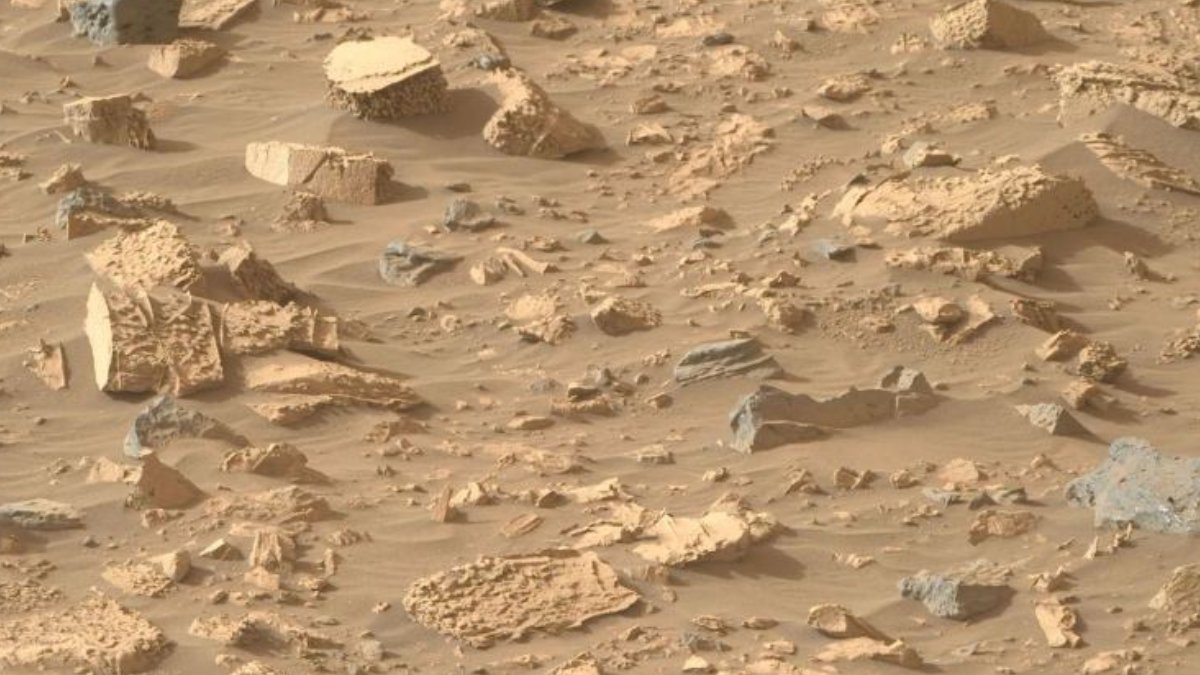Scientists discovered a unique kind of rock they are referring to as “popcorn rock.” The peculiar rock provides additional proof that Jezero Crater originally had water.
NASA’s Perseverance Rover has reached Bright Angel, its next stop, after departing from Mount Washburn. The goal of Perseverance is to concentrate on life on prehistoric Mars.
It involves not just looking for fossilized proof of extinct species but also looking for and attempting to comprehend possible habitats for life.
It is located in the Jezero Crater, an old paleolake with a sedimentary delta and other fascinating geological characteristics, for this reason.
Perseverance reached Bright Angel on Sol 1175 of its mission. Bright Angel is a location of scientific importance that is a section of the river system that fed into Jezero Crater.
The pale rock formations in Bright Angel are either very old rock exposed by the river or old sediments that once filled the channel.
Mission staff could make out the glowing rocks in the distance as Perseverance approached Bright Angel.
However, getting to the new location wasn’t a simple route. The rover’s operators had to alter the route because of the tough boulder field it faced.
“We were making good progress paralleling the channel in late January, but then the boulders got bigger and more numerous,” stated Evan Graser, deputy strategic route planner lead for Perseverance at NASA’s Jet Propulsion Laboratory in Southern California.
Drives that used to average more than a hundred meters every day on Mars decreased to only tens of meters. It was annoying.
There are two ways to persevere. The mission planning team plans the rover’s path approximately 30 meters at a time, using pictures in more rugged terrain.
The team uses Perseverance’s AutoNav autopilot mode to go farther in a single sol than that. However, AutoNav faltered as the path across the boulder field got harder.
The safest course of action is sometimes to simply cease it. However, this indicates that the journey to Bright Angel was taking a lot longer than expected.
Since dunes have been observed to devour Mars rovers, we had been scanning the river channel slightly to the north as we traveled in the hopes of spotting a stretch where the dunes were tiny and spaced sufficiently apart for a rover to get over, according to Graser.
A NASA press release stated that the sight left geologists spellbound. The term “popcorn rocks” refers to some of the rocks because of how closely spaced out the spheres are.
There are several ridges in the rocks that resemble mineral veins. When water carries minerals through rock and deposits them, mineral veins are created.
Mineral veins are found throughout the moist, humid Earth, and have even been observed by rovers on Mars.
Image Credit: NASA/JPL-Caltech/MSSS
There’s a chance that the popcorn features are proof of water. They reveal that water once passed through these rocks, just as veins are found in minerals.
Finding out what minerals are in these popcorn rocks is the next step. As it ascends the Bright Angel, perseverance will gauge its progress.
It will examine it in even more detail over the weekend using its abrasion tool and other tools. It will utilize its SuperCam array of instruments to analyze the chemical of the rock and evaporate some of it.
Those findings will determine whether or not to take a sample for a potential return to Earth.
After Perseverance’s mission at Bright Angel is complete, the rover will head south once more, traversing Neretva Vallis before arriving at Serpentine Rapids.
